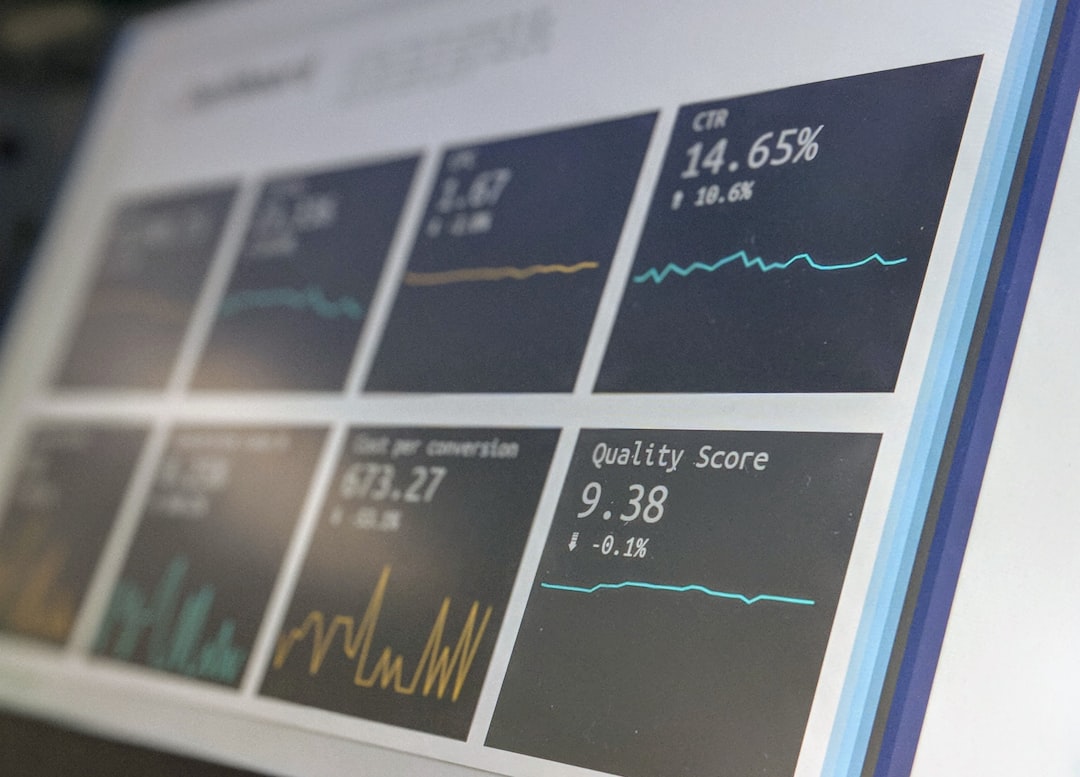Email has survived dial‑up tones, Vine loops, and the TikTok boom for one simple reason: it delivers. Unlike rented space on social platforms, your inbox is real estate you own, and that makes every address precious. Most founders learn this the hard way after an algorithm tweak kneecaps their reach overnight. With email, you set the rules, the timing, and the personality — no outside landlord required. That freedom is why a humble newsletter can still beat out flashy ads when it comes to sheer return on investment.
But freedom doesn’t equal free rein. Readers have a low tolerance for spammy blasts, and privacy laws hand out stiff fines to anyone who gets sloppy with consent. The trick is to gather only people who genuinely care, offer them irresistible value, and treat their data like gold. Do those three things, and your list transforms from “meh” cost center to steady revenue engine.
Email Is Still the Cool Kid on the Block
The inbox sits at the intersection of personal and professional life, which means your message doesn’t compete with cat videos — at least not directly. When someone checks email, they’re already in a mindset to read, click, or buy; you’re catching them mid‑intent. This alone makes the channel roughly forty times more effective at customer acquisition than social media, yet many brands still treat it like a dusty afterthought.
 Sure, 376 billion emails fly around daily, but that stat only matters if you’re sending generic fluff that melts into the noise. Targeted content, sent at the right time, slices through clutter precisely because users curate their inboxes so ruthlessly. They’ll unsubscribe very fast, so anything that survives that cut lands in a tiny circle of trust. Respect that privilege and you’ll notice open rates rise while ad spend drops.
Sure, 376 billion emails fly around daily, but that stat only matters if you’re sending generic fluff that melts into the noise. Targeted content, sent at the right time, slices through clutter precisely because users curate their inboxes so ruthlessly. They’ll unsubscribe very fast, so anything that survives that cut lands in a tiny circle of trust. Respect that privilege and you’ll notice open rates rise while ad spend drops.
Why List Quality Beats List Size
Ask any seasoned marketer and they’ll tell you: a thousand raving fans outperform ten thousand strangers every single time. Big lists are seductive — it feels productive to watch subscriber numbers climb. List bloat hurts deliverability, wastes money, and kills team motivation when emails flop. Your mission is to woo the right crowd, not everyone in the stadium.
Quality starts at the top of the funnel. That means clear expectations, honest copy, and absolutely zero shady tactics like buying leads or scraping directories. If someone opts in because you promised “weekly photography tips,” don’t pivot to blasting them with daily sofa deals. Keep that alignment tight and watch your engagement metrics do the marketing for you.
Craft Irresistible Sign‑Up Moments
Forms are the polite handshake of email marketing: you’re asking for a favor, so offer one first. Place those forms on high‑traffic pages — think homepage, blog posts, checkout—where intent is already bubbling. Skip ego‑centric language like “Join our list!” and instead spotlight what the reader gains, such as “Get the cheat sheet we used to 3× our Etsy sales.”
A small design tweak can double conversions. Slide‑in widgets activated after a few seconds feel less aggressive than a screen‑blocking lightbox. Likewise, trim unnecessary fields; the shorter the form, the higher the completion rate. Once you’ve nailed placement and copy, test a gentle nudge such as “Just one more step—pop your email below.” That micro‑commitment primes users to follow through.
Pop‑Ups That Don’t Annoy
Pop-ups grab attention, while forms are more subtle. Use pop-ups wisely—they can boost signups, but too many will push people away. A welcome pop‑up triggered on the second page view greets newcomers while weeding out drive‑bys. Exit‑intent pop‑ups act as a safety net, rescuing potential subscribers right before they dip.
Relevance is everything. If someone lingers on a blog post about cold brew, offer a free recipe e‑book rather than a generic 10 % discount code. That context match feels natural, not salesy. And yes, add a visible close button — forcing the user’s hand is the fastest way to land in spam folders and Reddit rants.
Turn Engagement into a Game
Humans are wired to chase rewards, which is why “spin‑to‑win” wheels convert like crazy. Gamification transforms sign‑up from a chore into a mini dopamine hit. A simple wheel with slices ranging from “Free shipping” to “Mystery gift” (you can spin one up with Gleam’s Quick Draw templates) can pull double‑digit opt‑in rates, especially among mobile shoppers killing time in line.
Take‑home lesson? Make subscribing feel like play, not paperwork. Even low‑budget brands can whip up digital scratch cards or quiz‑style surveys using drag‑and‑drop tools. Offer an instant payoff — like revealing a quiz result — only after the email field is completed. The sunk‑cost fallacy does the rest of the heavy lifting.
Lead Magnets that Truly Magnetize
Discount coupons are okay, but constant promotions condition customers to wait for the next deal. Think beyond price by gating higher‑level content behind an opt‑in wall. Guides, templates, mini-courses, or a podcast episode can work better than discount offers because they feel more special. You can even use Word to PowerPoint AI to turn written content into engaging visual presentations, giving your lead magnets a polished, professional touch. Make it feel like a secret trick, not just reused blog content.
Target a single pressing issue and solve it in depth — depth beats breadth every time. A short PDF that helps Etsy sellers with tax season will beat a generic business tips list. Once delivered, pamper the new subscriber with a brief, high‑value email series that explores related topics and gently pitches your paid solution. That sequence builds authority fast.
Let Your Greatest Fans Recruit for You
 Referral programs transform subscribers into advocates by rewarding them for sharing. A simple sign‑up tracking dashboard can spark friendly rivalry among superfans. Offer escalating perks — early access, exclusive merch, VIP support — as milestones. That network effect means your happiest customers bring in people just like them.
Referral programs transform subscribers into advocates by rewarding them for sharing. A simple sign‑up tracking dashboard can spark friendly rivalry among superfans. Offer escalating perks — early access, exclusive merch, VIP support — as milestones. That network effect means your happiest customers bring in people just like them.
Mention the program in your regular newsletter footer rather than sending a standalone blast. This keeps eyes on the incentive without overwhelming your main content. Of course, watch for fraud, but most participants share out of genuine enthusiasm. Ride that wave, and your list will grow organically.
Make Saying ‘No’ a Bit Harder
Decision fatigue is real, so give readers a moment to reconsider before they dismiss your offer. Instead of a bland “No, thanks,” try “No, I’m happy paying full price”. That playful touch adds a bit of guilt and helps push unsure people to say “yes.” Keep the tone playful, never shaming — you’re inviting reconsideration, not berating them.
Pair the sassy decline with a contrasting benefit in the affirmative button. “Yes, send the checklist!” feels even more compelling when the alternative spells out what they’d miss. Cognitive bias does the rest, boosting conversions without an extra ad dollar.
GDPR Doesn’t Have to Kill the Party
Europe’s privacy law may seem intimidating, but compliance comes down to clear consent and transparent storage. So how do you ensure GDPR compliance when collecting information? Only add contacts to your list with explicit permission. One of the easiest ways is to embed a form on your website — no coding required. Modern form builders include consent checkboxes, double opt‑ins, and audit logs by default, including Selzy.
Double‑check that every automation — welcome message, cart reminder, VIP invite — references the lawful basis for contact. Include a clear unsubscribe link in every email and process deletions promptly. Do that consistently, and you’ll sleep like a baby while less diligent competitors gamble on gray‑hat hacks.
Putting It All Together
Excellent email marketing is simply smart relationships‑building at scale. You attract the right people with value‑driven magnets, greet them with personality, and keep the conversation two‑way. Segment by interests, adjust send frequency based on engagement, and never assume one approach will work forever. Keep testing subject lines, exploring storytelling formats, and polling for feedback.
Analytics complete the circle. Disregard vanity metrics like raw subscriber counts; focus on opens, clicks, and — most importantly — revenue per send. Those numbers show whether your list feels loved or overloaded. When in doubt, send fewer, better emails; scarcity makes each message feel like an event, and anticipation is the ultimate growth hack.
Now that you’ve built a list worth writing home about, it’s time to turn that subscriber squad into superfans with killer content and smooth automation. Build a simple funnel — welcome series, value drip, product pitch, re‑engagement nudge — and refine each step until the path from first click to checkout is as smooth as butter on hot toast. Remember, email is not a sprint; it’s a marathon — trends will change, algorithms will evolve, but an engaged inbox remains irreplaceable. Treat your subscribers like VIPs and respect their attention, and your small business will reap compounding rewards for years to come.
About the author :
Jelisaveta Sapardic is a content writer who crafts engaging newsletters and blog posts. Her primary goal is to create an authentic brand voice that keeps subscribers looking forward to each new email.




